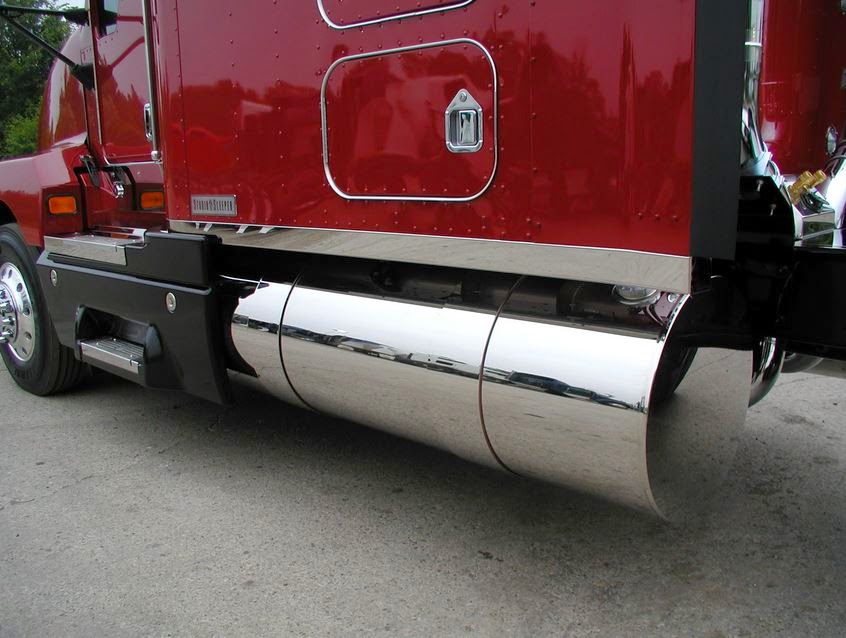APRIL 10, 2015
The two fuel tanks of a long-haul truck (located on each
side of the tractor) can carry between 100 and more than 140 gallons of fuel
oil, each. This is between 200 and 280
gallons of diesel fuel. The crankcase
holds 11 -15+ gallons or so of lubricant oil.
The radiator holds 6-12 gallons of antifreeze fluid.
The fuel tanks are also located in an accident and leak
prone position in the front right and left of the truck. Even a simple jackknifing of the truck can
cause the tank to spill its contents.
Jack-knifing in which an instability often associated with an empty, or
low-weight trailer being towed on a slippery road leads to catastrophic
articulation of the joint between tractor and trailer.
Jack-knifing is one of the most significant problems facing
truck drivers and a major cause of traffic pile-ups and other multiple-vehicle
accidents on major roads.
The regulations require side-mounted fuel tanks to survive a
30 foot drop test, while non side-mounted fuel tanks must survive a 10 foot
drop test. Clear specifications are given as to what constitutes a successful
drop test and how to conduct the test.
The regulations also require, among other things, that fuel
tanks pass a leakage test and a flame test.
However, the regs do not include a pierce test.
The majority of diesel tanks manufactured today are made of
steel; however truck operators may elect to choose aluminum fuel tanks when
replacing older tanks on their vehicles.
Aluminum offers advantages of lighter weight and resistance to
corrosion, but they are the ones that are prone to piercing during crashes and
other collisions with fire hydrants, road debris, and other protruding objects.
Fuel tanks are safer if they are located in a protected zone
forward of the rear axle, and also by using anti-puncture shields and internal
tough-skin fuel cell bladders, and by eliminating the sharp bolts, brackets,
and edges of the "hostile environment" around the fuel tank. However, as most people can attest to, the
200 gallon aluminum tanks and other fuel tanks are most of time not protected
by anti-puncture shields.
Considering that there are few thousands spills from trucks
during crashes, jackknifing or other incidents, it can be easily seen that we
have several million gallons of fuel being released into the roads and the
environment every year.






